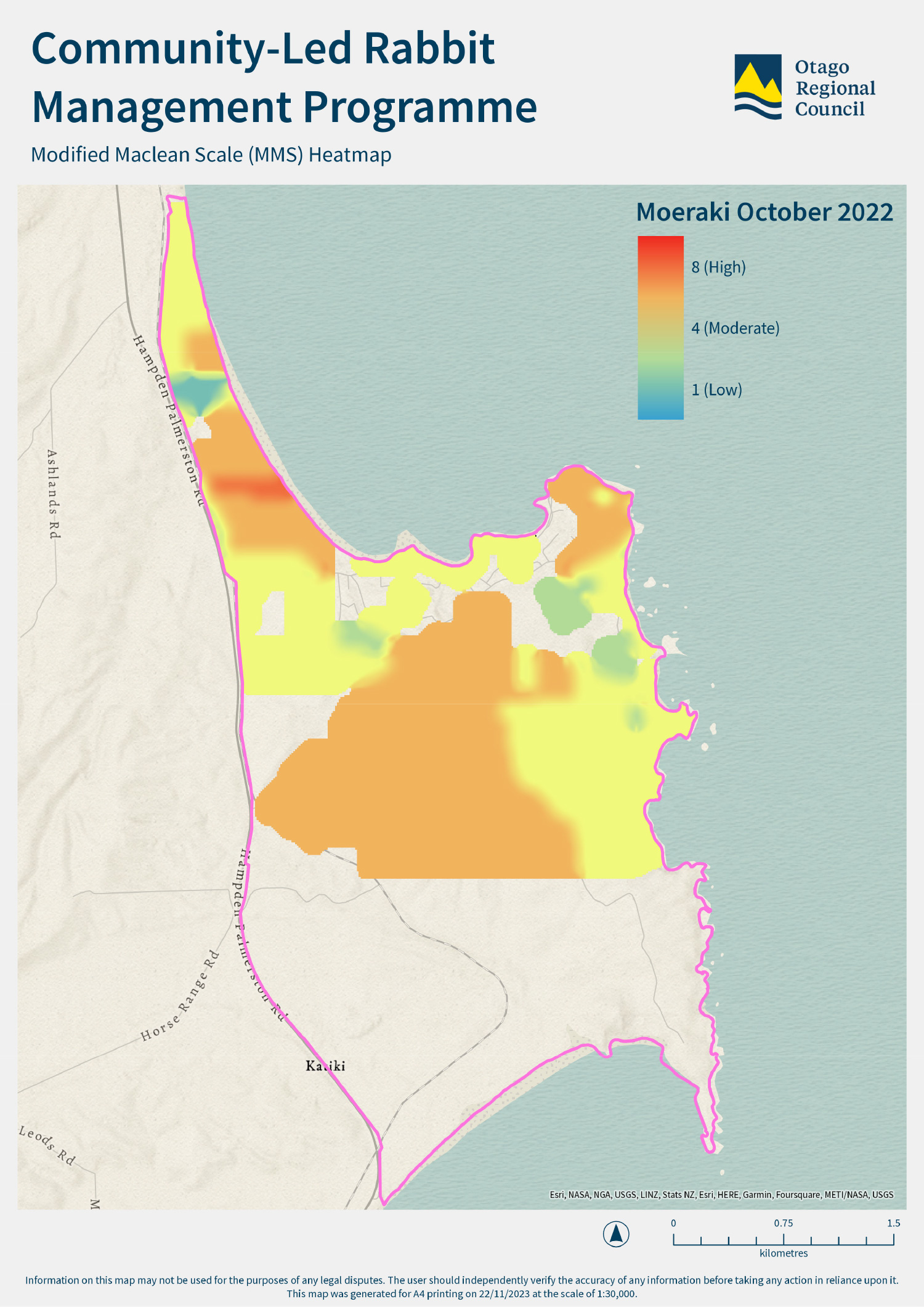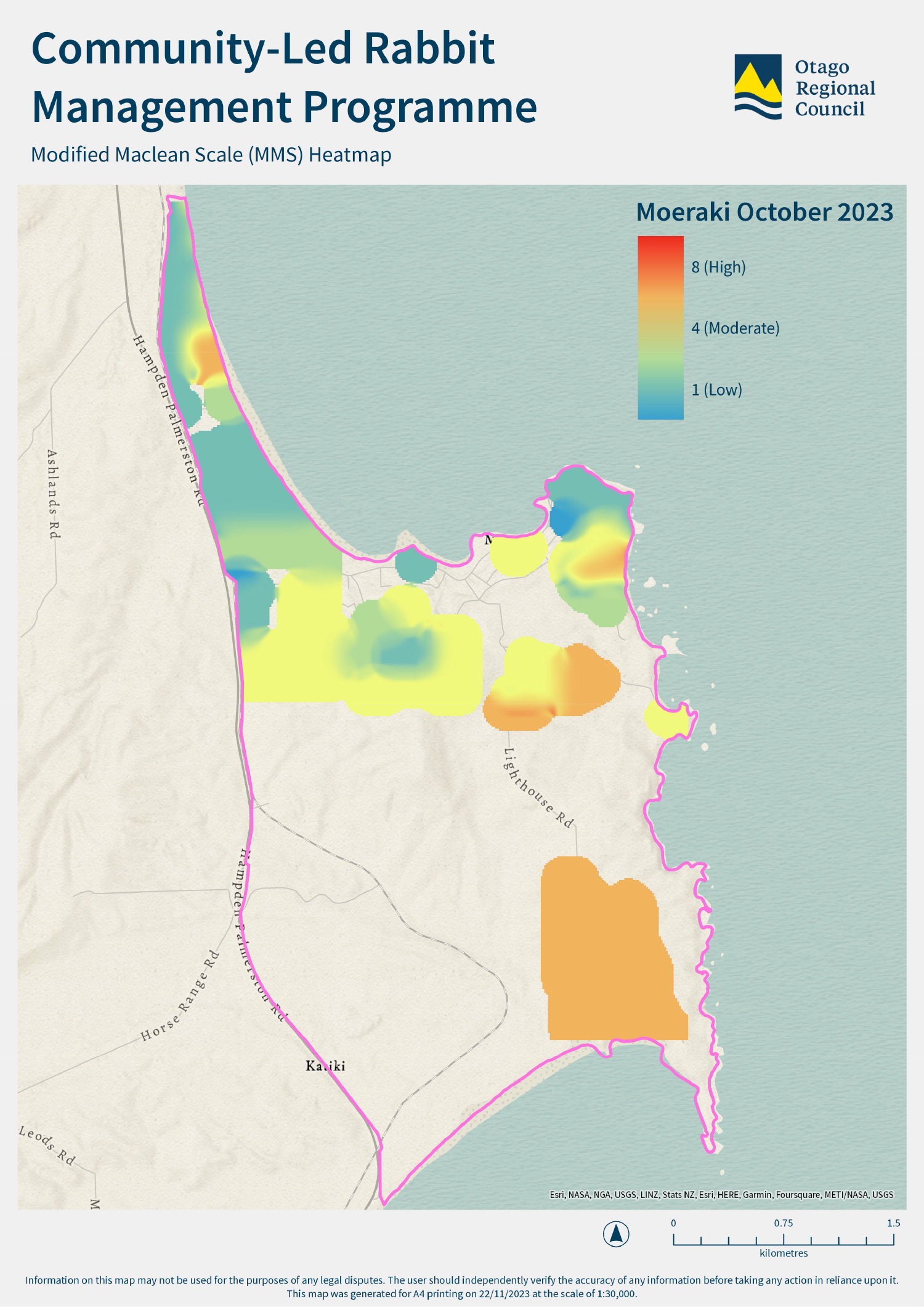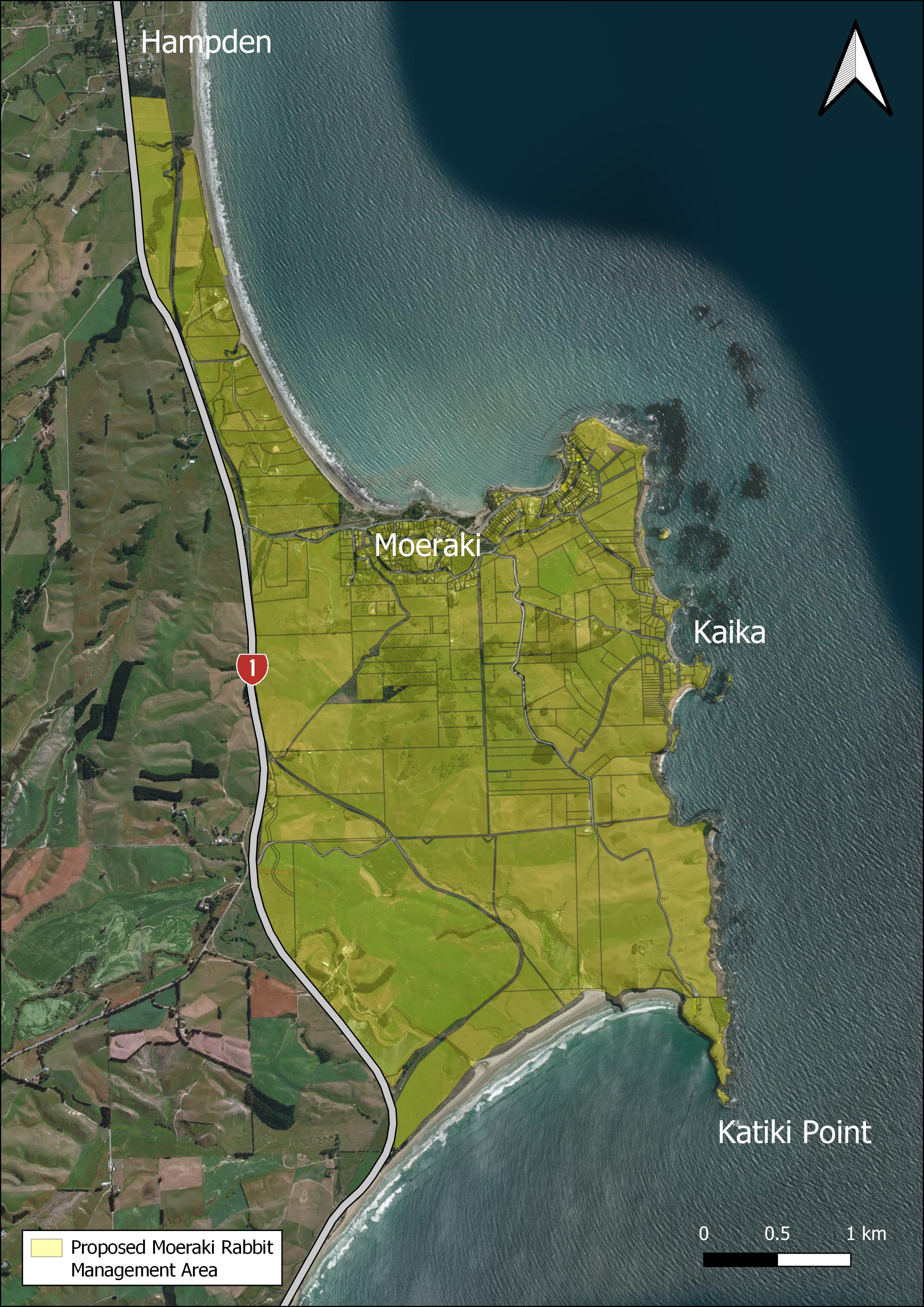-
-
-
-
-
-
-
-
-
-
-
-
-
-
-
-
Moeraki community-led rabbit management programme
-
-
-
-
-
-
-
-
Moeraki community-led rabbit management programme
Action summary
In September 2021, we initiated the Moeraki Community-Led Rabbit Management Programme. Objectives of this Programme include determining which areas of Moeraki are particularly rabbit prone and why, providing education about roles and responsibilities in relation to rabbit management, and providing guidance on effective rabbit management approaches.
In October 2021, we undertook inspections and visits on 97 public and privately-owned properties, >0.5ha in size, in the Moeraki area to determine which locations are most affected by rabbits, which properties are managing rabbits well, and which properties require a greater level of control. This included several properties owned by Waitaki District Council (WDC) and the Department of Conservation (DOC).
A total of 40 properties inspected were assessed as requiring a greater level of control to be compliant with the relevant rules in the Regional Pest Management Plan (RPMP; see Map 1). Engagement visits were conducted by staff to the rest of the properties (196 properties) within the programme area (i.e. properties <0.5ha in size).
In November 2021, the council invited all property owners/occupiers to attend a community meeting and management plan workshop to allow neighbouring property owners/occupiers to come together and discuss their rabbit management approach, and for ORC staff to also offer advice on control options. At this time, ORC also undertook an inspection on the KiwiRail rail corridor land.
After the meeting/workshop, the owners/occupiers of the 40 properties indicative of non-compliance were asked to submit a rabbit management plan detailing how they will effectively manage rabbit numbers on their properties. In total, only 20 management plans were received. These were reviewed by staff and individualised feedback was provided to owners/occupiers.
In October 2022, properties assessed as requiring a greater level of control as well as some previously compliant properties were re-inspected (51). Of these, 38 properties were assessed as requiring a greater level of control to be compliant with the relevant rules in the RPMP (see Map 2).
In October 2023, of the 37 properties re-inspected, 21 properties are now compliant, and 16 properties were assessed as requiring a greater level of control to be compliant with the relevant rules in the RPMP (see Map 3).
We have produced heat maps using inspection data to demonstrate the progress the Moeraki community has achieved over the last 3 years (see Map 1-3 below). The heatmaps show an overall reduction in rabbit numbers and suggest that there have been some significant improvements since the initial inspections carried out in 2021. However, it is also evident that there is still work to be undertaken to reduce rabbit numbers on the remaining properties working towards compliance.

Map 1: Moeraki Rabbit Heat Map (October 2021)

Map 2: Moeraki Rabbit Heat Map (October 2022)

Map 3: Moeraki Rabbit Heat Map (October 2023)
Next steps
We have seen a range of positive steps being taken by property owners/occupiers such as installation of rabbit fencing, engaging contractors for multi-year sustained control efforts, and coordination of efforts between neighbouring properties.
Given that rabbit management is an ongoing challenge, ORC will continue to facilitate a Community-Led Rabbit Management Programme in Moeraki and continue to work with the remaining properties to encourage them to take more action and/or to plan and coordinate their efforts more effectively.
We will continue to offer guidance on effective rabbit management options to those owners/occupiers who need it most. We will also be undertaking further inspections and following up with compliance action for some properties. This is to ensure that the hard work being undertaken by most property owners/occupiers is not jeopardized by lack of action from others.
For more information on rabbit management and the RPMP, visit our Pest Hub.
Register your interest in a community-led rabbit management programme
Fencing
We have been promoting the installation of rabbit fencing as an effective measure to prolong the impact of any rabbit control work undertaken. These recommendations are supported by our observations in the field, which are that rabbit numbers throughout Moeraki are generally lower in areas where there is more rabbit fencing in place.
We continue to strongly recommend rabbit fencing as the first step in an effective, long-term, sustainable rabbit management plan. Even if it is not feasible to fence the entire property boundary all at once, strategic fencing along boundaries that are most prone to reinvasion can still go a long way towards keeping rabbit numbers down to a manageable level.
Tips for Smaller Properties
Our work to date has been focused on properties greater than 5,000 m² in size, but we are aware that rabbits on smaller properties may also be contributing to the area’s problem. If rabbits are able to graze, hide or even just pass through these properties then there are measures that the property owner/occupier could take to contribute to the wider collective rabbit management effort. These measures include:
- Rabbit exclusion fencing
- Pruning the bottom of shrubs and hedges to reduce the amount of suitable shelter for rabbits
- Ensuring that any gaps under buildings and sheds are blocked to prevent rabbit access
- Removing any piles of wood, rubbish or vegetation that offer rabbits protection from the weather and predators
Control methods on smaller properties and in urban settings can also include the use of Pindone rabbit pellets in bait stations, fumigation of burrows (using Magtoxin) as well as follow up shooting (in appropriate locations) by experienced contractors. For more information on any of these methods please visit this webpage in the first instance and email or call if you have any further questions.
Email: biosecurity@orc.govt.nz
Phone: 0800 474 082
Please note that any toxic agents (i.e. Pindone and Magtoxin) must only be used in accordance with manufacturer’s instructions to minimise the risk of harm to children, pets, stock and native wildlife.
You can find more information about rabbits and available management techniques here.
If you would like further information, or a current list of rabbit contractors working in your area, please contact biosecurity@orc.govt.nz.

